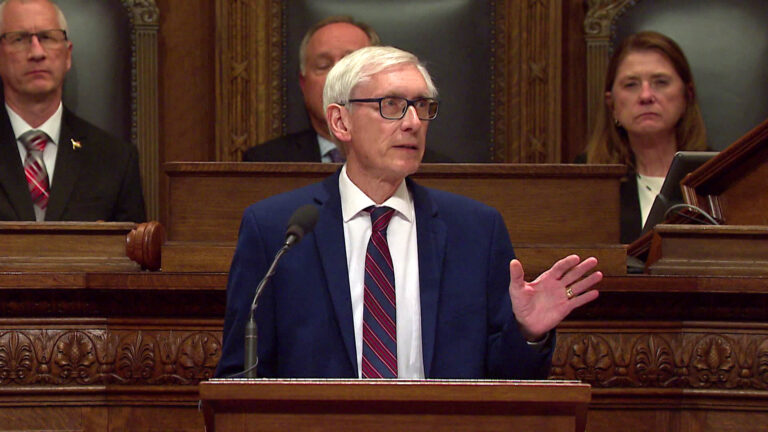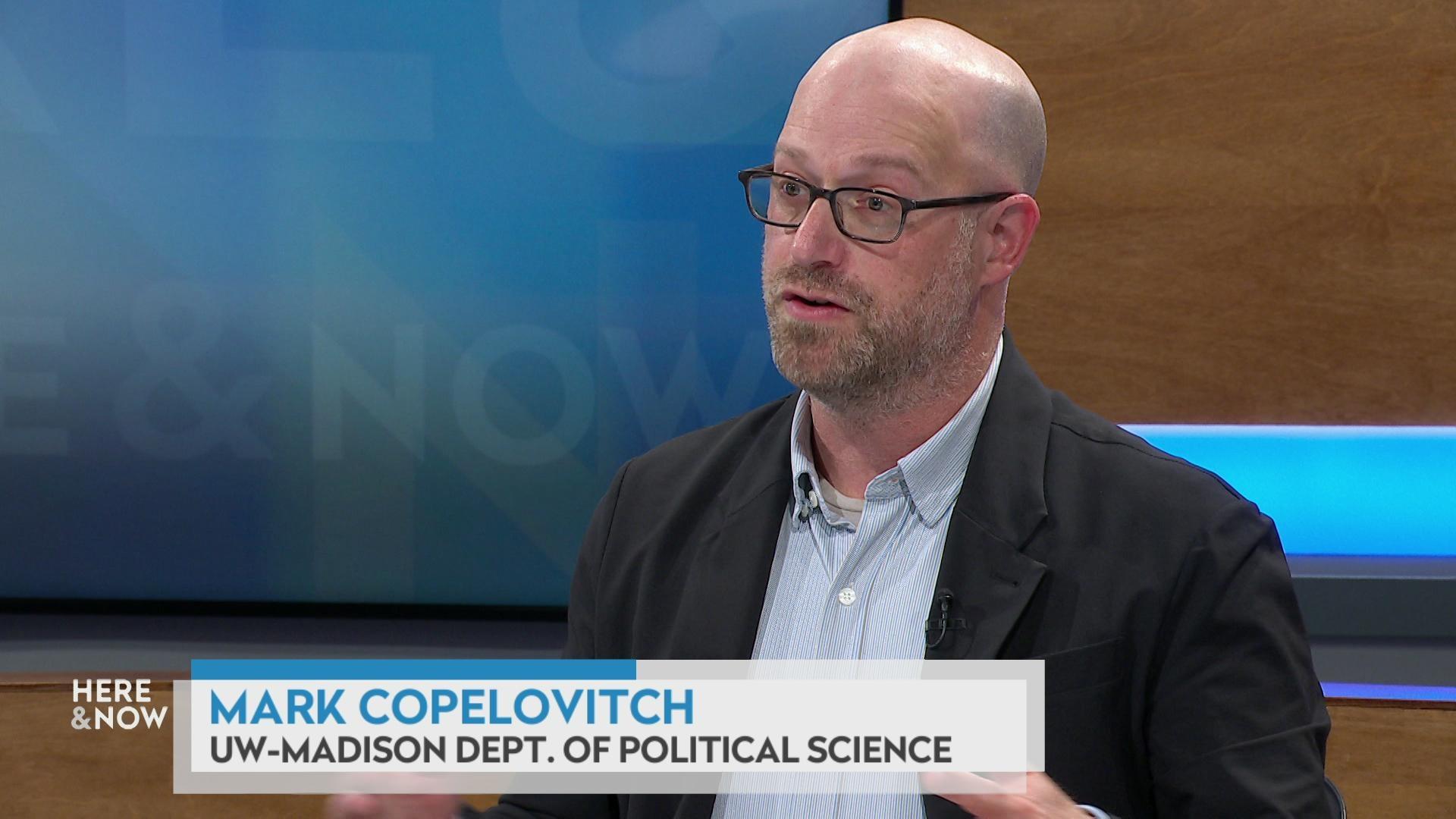Zac Schultz:
Whomever draws the political maps will likely determine which party holds the power in Wisconsin. The battle over redistricting in Wisconsin started years ago and after a long delay, the latest census data is finally here and so are the lawsuits. Joining us now to talk us through it is UW-Madison Associate Professor Robert Yablon. Thanks for your time.
Robert Yablon:
Glad to be with you.
Zac Schultz:
Let’s set the stage. Late last year Republicans asked the Wisconsin Supreme Court to create a rule giving the state court control over any lawsuits related to redistricting. Last week, the census data comes out and immediately the Democrats filed a lawsuit in federal court. Why did each party pick their favorite court here?
Robert Yablon:
You know, these are strategic calculations that each side makes. The Republicans looked at the composition of the Wisconsin Supreme Court and maybe felt it would lean a bit in their direction. The Democrats may have thought that they were likely to get a fairer shake in federal court. These are imperfect judgments. Who knows really where you’d rather be but each side has made that apparent choice.
Zac Schultz:
We should disclosed you’ve clerked for two Supreme Court justices in Ruth Bader Ginsberg and Sonya Sotomayor and they heard a case from Wisconsin on the issue of gerrymandering. What does that decision mean for the whole process going forward from the federal court’s perspective?
Robert Yablon:
So the case from Wisconsin that the U.S. Supreme Court heard ultimately was resolved with the U.S. Supreme Court saying it was not going to take an active role in reining in partisan gerrymandering. The court said those kind of claims are nonjusticiable and so they should be resolved through the political process. What you’re getting now is a different sort of claim so after a census we learned that populations shift. There are some places in Wisconsin that have too many people in each district. Other places that have too few and a map needs to be drawn. In the first instance, that task falls to political actors, to the Legislature and the governor. If they fail to do it though, someone needs to draw a new map. So even if federal courts are not actively monitoring partisan gerrymandering, they still have this job as a map maker of last resort and that’s what the lawsuits being filed now are all about.
Zac Schultz:
In past decades, gerrymandered maps have been overturned in federal court for reasons other than racial minority makeup, with the states of Pennsylvania and North Carolina having to redraw maps there mid-decade. I’ve seen analysis that says that Gill versus Whitford decision means the courts may be less likely to step in on an appeal of a map. Do you agree?
Robert Yablon:
It’s hard to say if the U.S. Supreme Court will ultimately get involved. These are cases actually that you are allowed to appeal directly from a federal district court to the U.S. Supreme Court. There is no intermediate appellate court as there is with other types of cases. That makes it more likely that the Supreme Court gets involved. But by the same token, whether the court actually steps in is going to depend on the specific issues that are raised and how the lower court resolves it.
Zac Schultz:
Now, in Wisconsin Republicans in the Legislature will draw their own maps and Governor Evers will likely veto them. Governor Evers has set up his Fair Maps Commission. They’ll introduce a map that will have no legal authority whatsoever. Do you think a court will pick between them or draw their own version or work from one of them? How does that happen?
Robert Yablon:
It could be all of the above. It’s clear that the federal court will have before it whatever map the Legislature produces, whatever map the People’s Map Commission comes out with and it’s a near certainty that there will be other actors in the litigation who join formerly as intervenors, as amici who submit their own maps for consideration. The court will have all of those at its disposal. Oftentimes the court will hire its own expert, meant to be an independent actor who it will give some guidance to and then that expert might create a whole separate map that’s meant to be all the courts and you’ll have substantial back-and-forth about all of these options.
Zac Schultz:
Do you think it’s possible for someone to draw a map that most people can agree is fair or will it always come down to who ends up with the partisan advantage?
Robert Yablon:
There is probably no such thing as an ideal district map that everyone will agree is the best one. At the same time, it’s pretty clear some maps will be better than others. You will have some maps that more people agree do a better job with criteria that we care about. And those are traditional redistricting criteria, things like keeping communities together rather than dividing political subdivisions or neighborhoods. Having districts that are more compact, having districts that try to be more competitive. From a neutral perspective, we know that these are things that districting plans ought to accomplish. You can balance between those factors. But when partisanship drives the process as it has in Wisconsin and plenty of other places, you’re likely to get a map that’s not going to fare very well with some of those other traditional fairness criteria that we think about.
Zac Schultz:
We have just a few seconds left. Give me your impression of the time line. Are we looking at next April when candidates have to start filing papers in these new districts before this is actually resolved or could it be before then?
Robert Yablon:
It could be a bit sooner than then. I think you’re right April would be the very end. Once candidates have to start filing papers, they need to know what districts they’re going to run in. But this will take some time to play out. This is complicated, contentious litigation. It’s really going to be a whirlwind for the courts to try to get there. I imagine they might target something like March as a time when they would like to get this finally resolved.
Zac Schultz:
All right. Thank you very much for your time today.
Robert Yablon:
Glad to be with you.
Search Episodes

Donate to sign up. Activate and sign in to Passport. It's that easy to help PBS Wisconsin serve your community through media that educates, inspires, and entertains.
Make your membership gift today
Only for new users: Activate Passport using your code or email address
Already a member?
Look up my account
Need some help? Go to FAQ or visit PBS Passport Help
Need help accessing PBS Wisconsin anywhere?

Online Access | Platform & Device Access | Cable or Satellite Access | Over-The-Air Access
Visit Access Guide
Need help accessing PBS Wisconsin anywhere?

Visit Our
Live TV Access Guide
Online AccessPlatform & Device Access
Cable or Satellite Access
Over-The-Air Access
Visit Access Guide
 Passport
Passport


















Follow Us